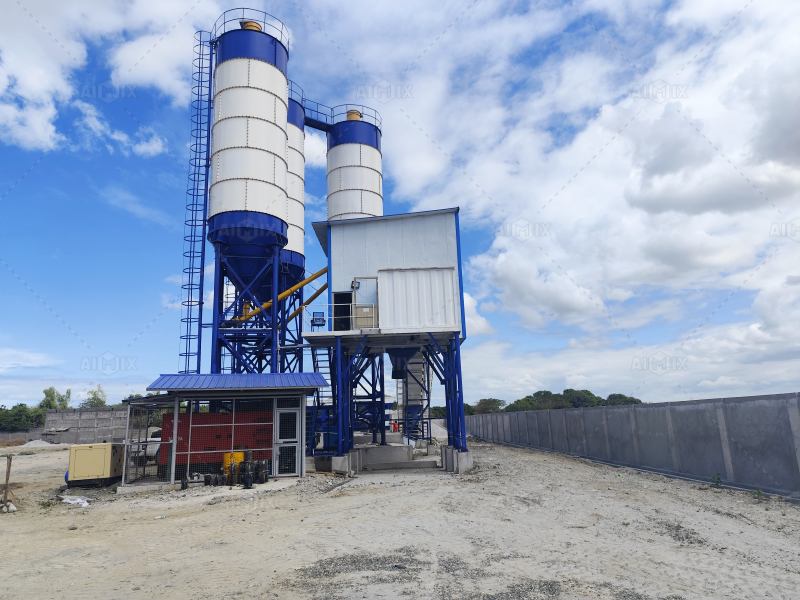Concrete batching plants play an indispensable role in the construction industry, providing a steady supply of high-quality concrete for infrastructure, residential, and commercial projects. For many buyers, the concrete batching plant cost is a major factor in their investment decisions. While initial purchase price, transportation, and installation expenses are easy to calculate, what truly determines profitability is the long-term cost of operation and maintenance.
This is where technology upgrades come in. Over the past decade, advancements in automation, energy efficiency, and design innovation have significantly reduced the total cost of ownership for batching plants. For entrepreneurs drafting a concrete batching plant business plan, integrating these technologies is not just a cost-saving measure but also a strategy for building a competitive edge.

Traditionally, buyers focused on upfront costs—how much it would take to purchase and install a plant. However, industry experience has shown that the real expense lies in operational efficiency, energy consumption, maintenance frequency, and production reliability.
A plant with lower purchase cost but outdated technology may end up costing more in the long run due to higher energy bills, frequent breakdowns, and wasted materials. Conversely, modern batching plants equipped with advanced systems may cost more initially, but they lower total operating costs over time.
One of the most impactful upgrades influencing concrete batching plant cost is automation. Modern plants are equipped with programmable logic controllers (PLC) and user-friendly software that regulate material feeding, mixing times, and discharge rates.
For anyone developing a concrete batching plant business plan, investing in automation means a leaner workforce, consistent production, and predictable costs—all crucial for profitability.
Energy consumption is a major factor in long-term plant expenses. Traditional batching plants often rely on energy-intensive motors, compressors, and mixers. Modern upgrades include:
These technologies not only lower the concrete batching plant cost but also align with global trends toward sustainable construction. Energy savings translate into improved margins in any concrete batching plant business plan.

Frequent replacement of mixer blades, linings, and conveyor belts can add hidden costs. Manufacturers are now designing batching plants with wear-resistant steel, advanced seals, and modular parts that are easier and cheaper to replace.
Additionally, some plants come with predictive maintenance systems that monitor motor vibration, temperature, and performance. By detecting issues early, owners avoid costly breakdowns and production stoppages.
Incorporating these upgrades into a concrete batching plant business plan ensures lower repair expenses and greater uptime, making financial projections more reliable.
Modern batching plants also feature dust collection systems, noise reduction designs, and water recycling units. While these systems may add to the initial purchase price, they reduce the risk of fines, project delays, and community complaints related to environmental regulations.
For businesses looking to operate long term, these upgrades reduce risks and operating costs—important considerations in any sustainable concrete batching plant business plan.
Another trend lowering the concrete batching plant cost over time is the adoption of mobile and modular designs. Mobile batching plants can be dismantled and relocated within a day, minimizing transportation and site setup expenses.
For contractors handling multiple projects in different locations, mobility reduces logistics costs and increases plant utilization rates. Similarly, modular plants allow incremental capacity expansion without replacing the entire system.
For entrepreneurs drafting a concrete batching plant business plan, these options provide flexibility and reduce capital risks by scaling operations based on demand.
Looking ahead, artificial intelligence (AI) and Internet of Things (IoT) technologies will further transform batching plant efficiency. AI-powered systems can forecast maintenance schedules, optimize energy use, and even adapt mix designs to weather conditions.
These innovations will continue driving down the concrete batching plant cost, making them smarter investments for forward-looking businesses. Including such future-oriented technology in a concrete batching plant business plan can position a company as a market leader and attract investors who value innovation and sustainability.

While initial purchase price often dominates discussions, the concrete batching plant cost is best evaluated over its entire lifecycle. Technology upgrades in automation, energy efficiency, wear-resistant materials, and modular design significantly reduce long-term expenses and improve profitability.
For contractors, developers, and entrepreneurs preparing a concrete batching plant business plan, factoring in these upgrades is essential. They not only lower operational costs but also enhance plant reliability, environmental compliance, and long-term competitiveness. Ultimately, technology is not an expense—it is an investment that pays dividends over the entire lifespan of the batching plant.